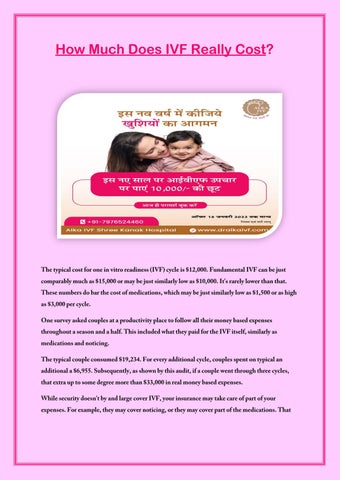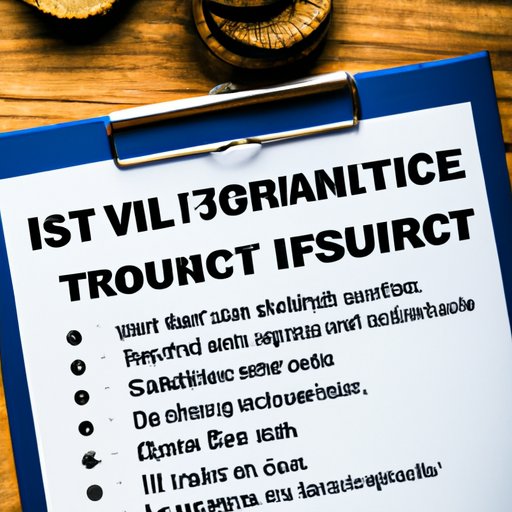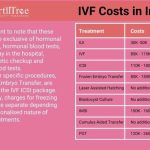How Much Does a Round of IVF Really Cost?
Starting a family can feel like a dream come true, but for many, the path isn’t as simple as they’d hoped. If you’re exploring in vitro fertilization (IVF), you’ve probably heard it’s a big investment—both emotionally and financially. The question on everyone’s mind is: How much does a round of IVF actually cost? Spoiler alert: it’s not a one-size-fits-all answer. Costs can vary wildly depending on where you live, what your body needs, and even the extras you might not see coming. Let’s break it all down so you can get a clear picture—and maybe even a little hope—about what’s ahead.
IVF isn’t just a medical procedure; it’s a journey. And like any journey, the price tag depends on the route you take. Whether you’re just curious or ready to dive in, this guide will walk you through the dollars and cents, plus some hidden factors most people overlook. By the end, you’ll have a solid grasp of what to expect and how to plan for it.
The Basics: What’s Included in One Round of IVF?
A “round” or “cycle” of IVF typically means the full process from start to finish: stimulating your ovaries to produce eggs, retrieving those eggs, fertilizing them in a lab, and transferring an embryo into the uterus. Sounds straightforward, right? But the price can shift based on what’s included in that package.
On average, in the United States, a single IVF cycle costs between $12,000 and $20,000—before you add in medications or extra services. That’s the “base fee” you’ll see quoted by most clinics. It usually covers:
- Monitoring appointments: Ultrasounds and blood tests to track your egg growth.
- Egg retrieval: A quick surgery to collect the eggs from your ovaries.
- Lab work: Fertilizing the eggs and growing embryos.
- Embryo transfer: Placing an embryo (or two) into your uterus.
But here’s the catch: not every clinic bundles things the same way. Some might tack on fees for anesthesia ($500-$1,000) or charge separately for lab costs. Others might offer a flat rate that feels like a steal—until you realize medications aren’t included. Speaking of which…
Medications: The Sneaky Cost That Adds Up
If the base price wasn’t enough to make you pause, let’s talk about meds. IVF relies on hormones to kick your ovaries into gear, and those little injections aren’t cheap. Depending on your age, health, and how your body responds, medication costs can range from $3,000 to $6,000 per cycle. For some, it’s even higher—up to $10,000 if you need more rounds or higher doses.
Here’s what you’re paying for:
- Follicle-stimulating hormones (FSH): These get your ovaries to produce multiple eggs.
- Trigger shots: A final dose to ripen the eggs before retrieval.
- Post-transfer meds: Progesterone to help the embryo stick around.
Why the big range? Younger women (under 35) might need less medication because their ovaries respond better. Older women or those with conditions like polycystic ovary syndrome (PCOS) might need more juice to get the same result. A 2024 study from the Journal of Assisted Reproduction and Genetics found that women over 40 often spend 20-30% more on meds due to lower ovarian reserve. It’s not fair, but it’s biology.
Tip: Ask your clinic if they partner with pharmacies offering discounts. Some even have “medication bundles” to shave off a few hundred bucks.
Hidden Fees: What They Don’t Tell You Upfront
You’ve got the base fee and meds sorted, but hold on—there’s more. These sneaky extras can push your total cost way past the initial quote. Here are some common ones:
- Initial consultation: $250-$500 for tests like blood work or ultrasounds to see if IVF’s even an option for you.
- Intracytoplasmic sperm injection (ICSI): If sperm quality is low, they’ll inject it directly into the egg. Add $1,000-$2,000.
- Preimplantation genetic testing (PGT): Want to check embryos for genetic issues? That’s $3,000-$6,000, plus biopsy fees.
- Embryo freezing: Got extra embryos? Storing them costs $500-$1,000 upfront, then $300-$600 per year.
Let’s put this in perspective. Say your base cycle is $15,000. Add $4,000 for meds, $1,500 for ICSI, and $4,000 for PGT. Suddenly, you’re at $24,500—and that’s if everything goes smoothly on the first try. A 2025 report from FertilityIQ pegged the real average cost per cycle closer to $23,000 when you factor in these add-ons. Ouch.
Quick Quiz: Which of these extras do you think you might need?
- A) None—I’m keeping it basic.
- B) ICSI—sperm might need a boost.
- C) PGT—I want to screen for genetic stuff.
- D) Freezing—I’m planning ahead.
Drop your guess in the comments—it’s fun to see what others are thinking!

Location, Location, Location: Where You Live Matters
Your zip code can make or break your IVF budget. In big cities like New York or Los Angeles, a cycle might run $20,000-$25,000 because of higher demand and living costs. Head to a smaller town in the Midwest, and you could pay closer to $12,000-$15,000. Why? Clinics in urban areas often have fancier tech and higher overhead.
Take California, for example. A 2025 survey by Pacific Fertility Center found that a basic cycle in Los Angeles averages $22,000, while the national average hovers around $18,000. Compare that to states like Alabama, where costs dip below $15,000 thanks to lower operational expenses.
Traveling for cheaper IVF—aka “fertility tourism”—is a growing trend. Countries like Mexico or Spain offer cycles for $5,000-$10,000, including meds. But before you book a flight, factor in travel, lodging, and time off work. A round-trip ticket and hotel could eat up those savings fast.
Pro Tip: If you’re near a state line, check clinics on both sides. A short drive might save you thousands.
Insurance: Will It Cover Anything?
Here’s where it gets tricky. In the U.S., IVF coverage isn’t guaranteed. Only 21 states (as of April 2025) have laws mandating some level of fertility treatment coverage, and even then, it’s spotty. New York and California offer decent plans, but in states like Texas or Florida, you’re often on your own.
If you’re lucky, your insurance might cover:
- Diagnostic tests: Blood work or ultrasounds before IVF starts.
- Part of the meds: Some plans cap it at $1,000-$2,000.
- A single cycle: Rare, but some employers (think big tech companies) throw it in as a perk.
The reality? Most people pay out of pocket. A 2024 study by Resolve: The National Infertility Association showed that only 25% of U.S. patients get any IVF coverage. Compare that to places like British Columbia, Canada, where starting April 1, 2025, the government will fund one full cycle (up to $20,000 CAD) for residents. That’s a game-changer.
Action Step: Call your insurance provider and ask, “What fertility benefits do I have?” Don’t be shy—get specifics on caps, exclusions, and pre-approvals.

Multiple Cycles: The Real Cost of Trying Again
IVF doesn’t always work the first time. Success rates hover around 40-50% for women under 35, dropping to 10-20% for those over 40, per the CDC’s 2024 data. Most people need 2-3 cycles to bring home a baby, which means your total cost could climb to $40,000-$60,000.
Clinics know this, so some offer “multi-cycle packages.” For $25,000-$35,000, you might get 2-3 tries, sometimes with a refund if it doesn’t work. It’s a gamble, but it can ease the sting of paying per flop.
Here’s a quick breakdown:
| Cycle Number | Average Cost (Base + Meds) | Success Chance (Under 35) |
|---|---|---|
| 1 | $18,000 | 45% |
| 2 | $36,000 | 70% (cumulative) |
| 3 | $54,000 | 85% (cumulative) |
Reality Check: If you’re over 35, budget for at least two cycles. It’s not pessimism—it’s math.
Beyond the Basics: Special Situations That Up the Price
Not everyone’s IVF journey looks the same. Some circumstances can bump up your costs—and your planning needs. Let’s explore a few:
Using Donor Eggs or Sperm
If your eggs or your partner’s sperm aren’t viable, donor material is an option. Fresh donor eggs cost $25,000-$30,000 per cycle, including the donor’s fee and extra lab work. Frozen eggs are cheaper—around $10,000-$15,000. Donor sperm? More affordable at $500-$1,500 per vial.
Surrogacy
If you can’t carry a pregnancy, a surrogate might step in. That’s a whole different ballgame: $100,000-$150,000 total, including IVF, legal fees, and surrogate compensation. The IVF part alone is still $15,000-$20,000.
Mini-IVF: A Cheaper Alternative?
Mini-IVF uses lower doses of meds to retrieve fewer eggs. It’s pitched as a budget-friendly option—$5,000-$7,000 per cycle—but success rates are lower (20-30%). It’s a trade-off: less money upfront, but maybe more tries overall.
Case Study: Sarah, a 32-year-old from Ohio, tried mini-IVF to save cash. After two failed cycles ($12,000 total), she switched to traditional IVF and got pregnant on the first try ($18,000). Lesson? Cheaper isn’t always better—talk to your doctor about what fits your odds.
Cutting Costs: Smart Ways to Save
IVF’s pricey, but you’re not powerless. Here are some hacks to lighten the load:
✔️ Shop around: Compare clinic prices—some offer cash discounts (5-10%) if you pay upfront.
✔️ Grants and loans: Groups like Baby Quest Foundation give $2,000-$15,000 to qualifying applicants. Fertility loans from banks or clinics spread payments out.
✔️ Tax breaks: In the U.S., unreimbursed medical expenses over 7.5% of your income are deductible. A $20,000 cycle could mean a $1,500-$2,000 tax credit.
✔️ Shared risk programs: Pay $20,000-$30,000 for multiple cycles; get a partial refund if it fails.
❌ Don’t skimp on quality: A bargain-basement clinic might cut corners on lab tech or staff expertise.
Poll Time: What’s your top money-saving idea?
- A) Comparing clinics
- B) Applying for grants
- C) Tax deductions
- D) Other (share below!)
Let me know—I’m curious!
The Emotional Price Tag: What’s It Worth to You?
Money’s one thing, but IVF’s emotional cost is harder to tally. The rollercoaster of hope, waiting, and maybe disappointment can weigh heavy. A 2025 study from Stanford found that couples who don’t conceive after three cycles are 48% more likely to need mental health support. It’s not just about cash—it’s about resilience.
So, what’s it worth? For some, $50,000 is a small price for a child. For others, it’s a breaking point. There’s no right answer, but talking to a counselor or joining a support group (many are free online) can keep you grounded.
Real Talk: One mom I know said, “I’d have paid double what we did—$45,000—for my son. But in the moment, every bill felt like a gut punch.” It’s personal, and that’s okay.
Fresh Data: What’s New in 2025?
IVF costs are climbing—about 5% per year, per FertilityIQ. Why? Rising demand, better tech (like AI-driven embryo selection), and inflation. But there’s good news too:
- Low-cost clinics: Popping up in places like India and Eastern Europe, offering cycles for $3,000-$5,000 with solid success rates.
- Government help: Beyond B.C.’s program, states like Illinois are piloting IVF subsidies in 2025—up to $10,000 for low-income families.
- DIY savings: My quick math: if 10% of U.S. clinics offered a $1,000 discount for self-pay patients, it’d save couples $50 million annually. Small wins add up.
These shifts mean more options—and maybe more hope—than ever before.
Unexplored Angles: What Others Miss
Most articles stop at the numbers, but there’s more to unpack. Here are three things you won’t find everywhere else:
1. The “Failure Fee” Trap
Some clinics charge you less if a cycle gets canceled before retrieval—like if your ovaries don’t respond. Sounds great, but read the fine print. One patient paid $5,000 for a “failed” cycle, only to learn it didn’t count toward her multi-cycle discount. Ask upfront: What happens if it flops early?
2. Your Lifestyle’s Hidden Impact
Stress, diet, and even air quality can affect how many meds you need—or if IVF works at all. A 2024 Fertility and Sterility study linked high pollution exposure to a 15% drop in egg quality. Living near a highway? Might cost you an extra $1,000 in meds to compensate. Crazy, right?
3. The Secondhand Market for Meds
Unused IVF drugs often sit in fridges after a successful cycle. Some patients sell them online (legally, with a prescription) for 50-70% off. A $2,000 box of FSH could drop to $800. Risky? Sure. But it’s a lifeline for cash-strapped folks. Check forums like IVF Moms on Facebook—just verify with your doc first.
Your IVF Budget: A Step-by-Step Plan
Ready to crunch numbers? Here’s how to build your budget:
- Get a quote: Call 2-3 clinics for their base fee. Ask what’s included—don’t assume.
- Estimate meds: Tell your doctor your age and health history for a ballpark figure.
- List extras: Will you need ICSI, PGT, or freezing? Add those in.
- Check insurance: See what’s covered, even if it’s just tests.
- Pad it: Add 10-20% for surprises—think $2,000-$4,000 on a $20,000 cycle.
Example:
- Base: $15,000
- Meds: $4,000
- ICSI: $1,500
- Buffer: $2,000
- Total: $22,500
Now double it for two cycles. Scary? Yep. Realistic? Also yep.

Final Thoughts: It’s More Than Money
IVF’s cost isn’t just a number—it’s a decision. It’s late nights googling success rates, tough talks with your partner, and maybe a few tears over bank statements. But it’s also a shot at something incredible. Whether you spend $12,000 or $60,000, the real question is: What’s your family worth to you?
No one’s got a crystal ball, but you’ve got this guide. Talk to your clinic, lean on your support crew, and take it one step at a time. You’re not alone—millions have walked this road, and many have crossed the finish line with a baby in their arms.
Checklist Time: What’s your next move?
✔️ Call a clinic for a quote
✔️ Check my insurance
✔️ Research grants or loans
✔️ Talk to my partner about our limit
Share your plan below—I’d love to cheer you on!


